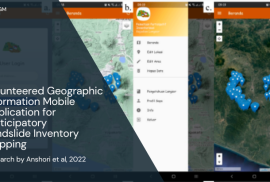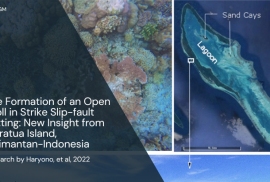Research by Anshori et al., 2022
Participatory landslide inventory mapping using the Volunteered Geographic Information (VGI) mobile app is a promising method to produce a landslide inventory map. The aim of this research is to describe the development and implementation of the VGI mobile app for participatory landslide inventory mapping. The architecture VGI mobile app is developed on the basis of Free Open-source Software for Geospatial Application server-client software to ensure reproducibility and flexibility, and to reduce cost. Anyone can reproduce, modify, and share the code, which suggests improvement in the collective ability to use, prepare, and landslide inventory update. Landslide inventory using VGI mobile app shows that the tool and method successfully map landslides in the landslide prone area (Magelang Regency, Central Java Province, Indonesia) with fairly high levels of effectiveness and convenience. Magelang Regency, one of the landslide prone areas in Java, is located in the intermountain basin surrounded by Menoreh Mountain, Merapi, Merbabu, Suropati-Telomoyo Complex, and Sumbing Volcano.



